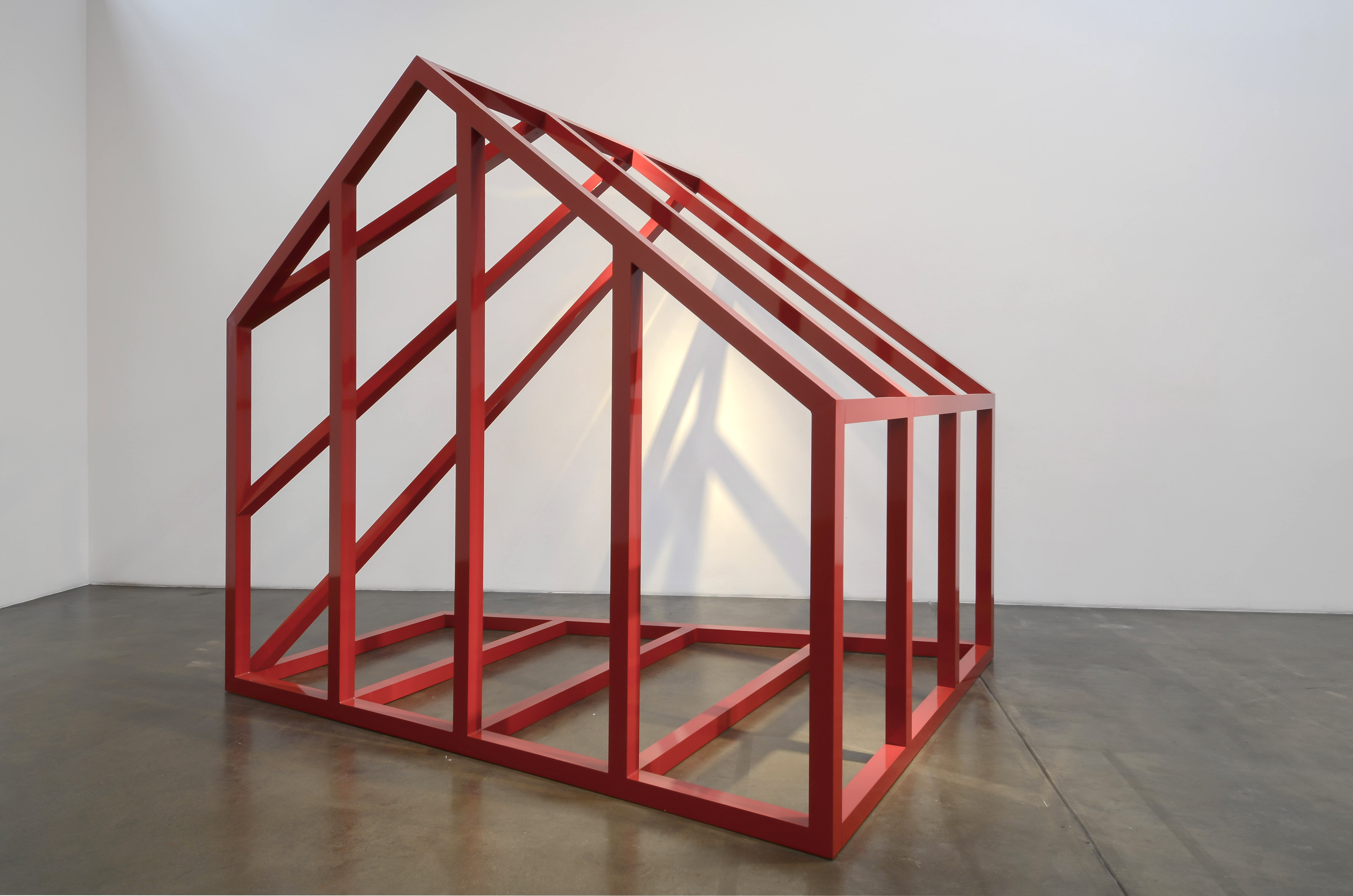For Rachel Lachowicz, lipstick—the actual infused-wax substance—has long functioned not simply as a gimmick, or brand, or even social signifier, but as a kind of idée fixe, a material so embedded in our culture, and so closely associated with femininity, that it personifies womanhood (certainly in western and westernized cultures). Lachowicz’s wholesale employment of lipstick as a thing to make objects out of, or at least coat them in, might seem to bely such personification: her emphatically sculptural engagement with lipstick borders on the macho. But the cognitive dissonance inherent in such androcentric use of female-associated stuff does not pack the wallop it used to, and Lachowicz has complicated her approach to lipstick—and three-dimensional structure in general—in order to adapt to the increasingly fluid definitions of and relations between genders. Her broadly parodic responses to the swagger of male-dominated art movements such as Minimalism, witty and pointed as they were, have had to give way to a more nuanced, if no less feminist, stance.

Rachel Lachowicz, “House Under Construction”, 2017 © Rachel Lachowicz, courtesy of Shoshana Wayne Gallery, Los Angeles.
The nuancing can get a bit recondite. In her latest show of work, Lachowicz references not the plaques of Carl Andre or boxes of Donald Judd, readily recognized by gallerygoers, but a particular film from early in Clint Eastwood’s career, High Plains Drifter (1973). Several large structures mimic buildings central to the town (and townspeople) represented in the western; they present the austere façades of Puritan vernacular architecture you’d expect from every “official” building in a cowboy town. And façades they remain: one look behind these looming, almost lifesize structures reveals that they are false fronts no more functional than any movie set. High Plains Drifter, a rather metaphysical movie, comes to a climax with the painting of the entire town red in anticipation of a huge showdown. Eastwood’s own character is a walking, riding and killing metaphor for revenge. It was his character’s committing two rapes, however, that provoked Lachowicz’ close reading and her own cleansing response. By coating the authorial (and by implication masculine) buildings in lipstick, she has made explicit the shame represented by the reddening of the town, a shame completed by the gesture of architectural emasculation. The rapist has been rouged.
Lachowicz began contemplating this transformation wrought upon transformation some 20 years ago, as film captures in the show also attest. And she continues to muse upon the gendered quality of architecture, cranking out a series of wall-hung, plexiglass and gator board geometries that look like incompletely built houses squashed flat. But here Lachowicz has a heart. The awkwardness of these renditions—whose red does not come from lipstick—radiates an endearing pathos; and their networks of cutout lines, echoing the struts that prop up the big red buildings, have an abstract interest in and of themselves. Where Lachowicz will go with this latest formula remains to be seen, and, as she’s proved over the course of her career, there’s plenty of room to make another point. But these pieces do lead, promisingly, out of Clint’s wilderness.


